The SAMSUNG S90D, also known as the S94D, is a device that has repeatedly pleasantly surprised us during our tests. It is worth mentioning that depending on the chosen size, the differences may concern the OLED panel used. However, regardless of which variant we encounter, one can count on excellent black levels and HDR effects, which, thanks to high brightness, make a huge impression. This is one of those TVs that really can elevate home viewing to a cinematic level. While testing films and series, we immediately noticed the great colour reproduction and depth of black. Dark scenes, which can be problematic on other screens, are full of detail and immersive here. Although the factory colour settings could be a bit better, after calibration the picture gained clarity, and the television showed what it is truly capable of. In terms of everyday use, we noticed that the wide viewing angles allow comfortable viewing even from less central positions. The Tizen operating system appealed to us – it is clear, fast, and offers access to the most popular applications. AirPlay works flawlessly, which was a nice addition during our tests. And what about picture fluidity?... The 144 Hz panel performs excellently. While watching sports, the image was smooth, with no hint of motion blur. Matches and races felt as if we were really in the stands. We also couldn't overlook the gaming tests. Low input lag and HDMI 2.1 support make the S90D/S94D an excellent choice for gamers. Games ran smoothly, and every movement was displayed with incredible precision. This is equipment that meets the expectations of even the more demanding console users. The SAMSUNG S90D/S94D is a television that combines excellent picture quality with modern features and versatility. Whether we are watching films, playing on a console, or simply using applications, this model impresses. In its price range, it is truly a strong contender.
- Matching (Score)
- Our verdict
- TV appearance
- Where to buy
- Contrast and black detail
- HDR effect quality
- Factory color reproduction
- Color reproduction after calibration
- Smoothness of tonal transitions
- Image scaling and smoothness of tonal transitions
- Blur and motion smoothness
- Console compatibility and gaming features
- Input lag
- Compatibility with PC
- Viewing angles
- TV efficiency during daytime
- Details about the matrix
- TV features
- Apps
- Playing files from USB
- Sound
Samsung OLED S90D / S94D (WRGB OLED) vs LG OLED B5
Direct compare
S90DAE / S94DAE

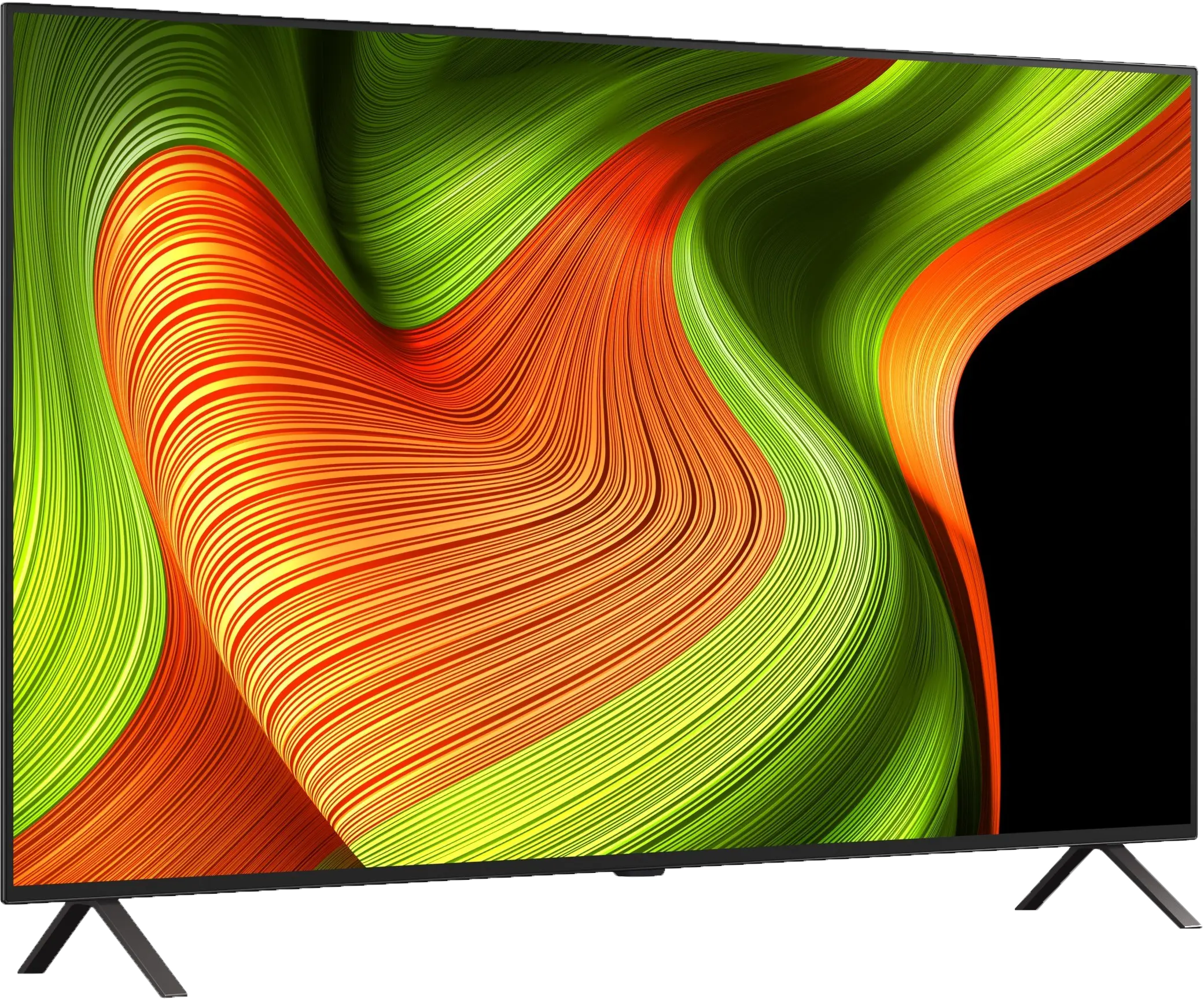
Panel type: WRGB OLED
Resolution: 3840x2160
System: Tizen
Model year: 2024
Complete the survey to find out the result

Panel type: WRGB OLED
Resolution: 3840x2160
System: WebOS
Model year: 2025
Complete the survey to find out the result

Overall rating
8.1
7.8
Movies and series in UHD quality
8.2
7.9
Classic TV, YouTube
8.7
8.6
Sports broadcasts (TV and apps)
8.5
8.5
Gaming on console
9.5
9.2
TV as a computer monitor
8.6
7.6
Watching in bright light
6.0
4.9
Utility functions
7.4
7.9
Apps
8.7
9.1
Sound quality
7.4
7.0
Complete the survey to find out what fits your preferences
Advantages
Ideal contrast
Great for 4K content
Excellent for gamers - 144hz, HDMI 2.1, low input lag.
Decent brightness
Advanced and smooth Tizen system
Perfect black and contrast
Pleasant image in HDR format
Excellent colour reproduction capabilities
120Hz OLED panel - great motion fluidity
4 HDMI 2.1 ports and full support for gamers (VRR, ALLM, Dolby Vision Gaming, HGiG)
Very low input lag
Correct content scaling and good digital processing
User-friendly webOS system with a Magic remote
Built-in USB recording function from built-in DVB-T/T2 tuners
Disadvantages
The colours from the box need improvement
Missing Dolby Vision (not essential at this brightness but would be appreciated)
Average brightness and poor performance in bright rooms
No support for DTS formats
Different remote versions in derivative models – difficult to predict which version we will receive
Our verdict
LG B5 is really a good OLED television, which shows that you don't have to spend a fortune for very good quality. It offers deep blacks typical of organic panels, very good colour reproduction – especially after calibration – and enjoyable HDR movie watching experiences. All of this means that evening screenings can provide cinema-like emotions even without resorting to much more expensive screens. The smoothness of the picture and the set of features for gamers also deserve recognition. A 120 Hz panel, low input lag, full support for HDMI 2.1, variable refresh rates, and Dolby Vision Gaming mode make the B5 a very versatile screen – both for gaming and watching sports. The friendly webOS system with a Magic remote adds to the package, providing convenient access to content and simplifying operation. However, not everything is perfect. Compared to the B4 model, a slight drop in brightness can be noticeable, especially in very bright rooms. For some users, the lack of DTS audio support may also be a problem, which could force some workarounds when connecting Blu-ray players. Despite this, LG B5 remains one of the most sensible choices for those who want to enter the world of true cinema – without overspending, but also without major compromises. It's a screen that doesn’t need to prove anything – it simply delights the eye with excellent picture quality and works as it should.
TV appearance





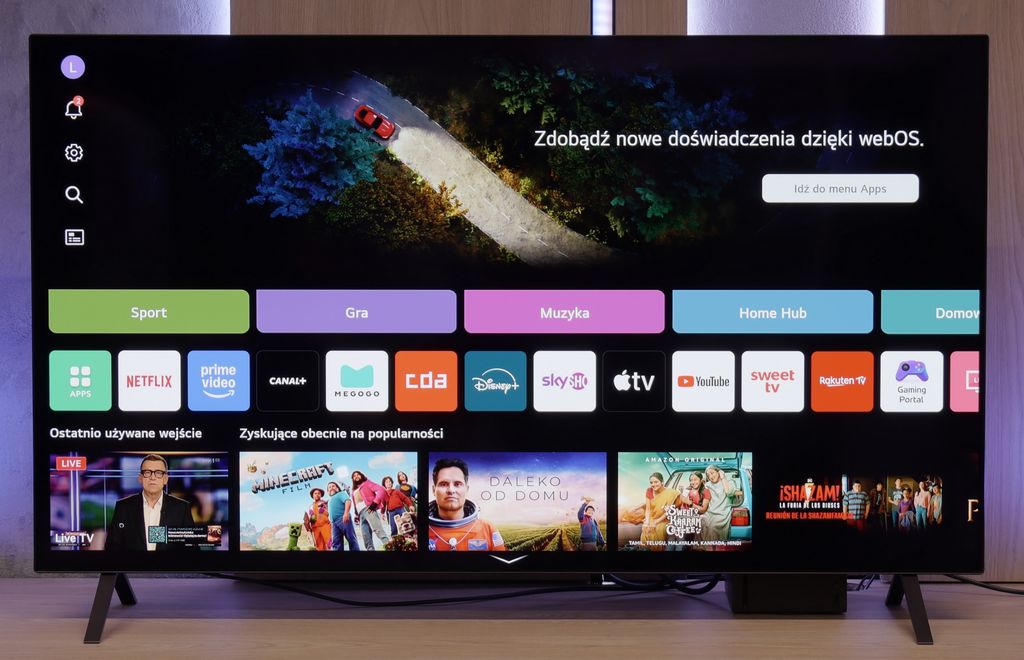
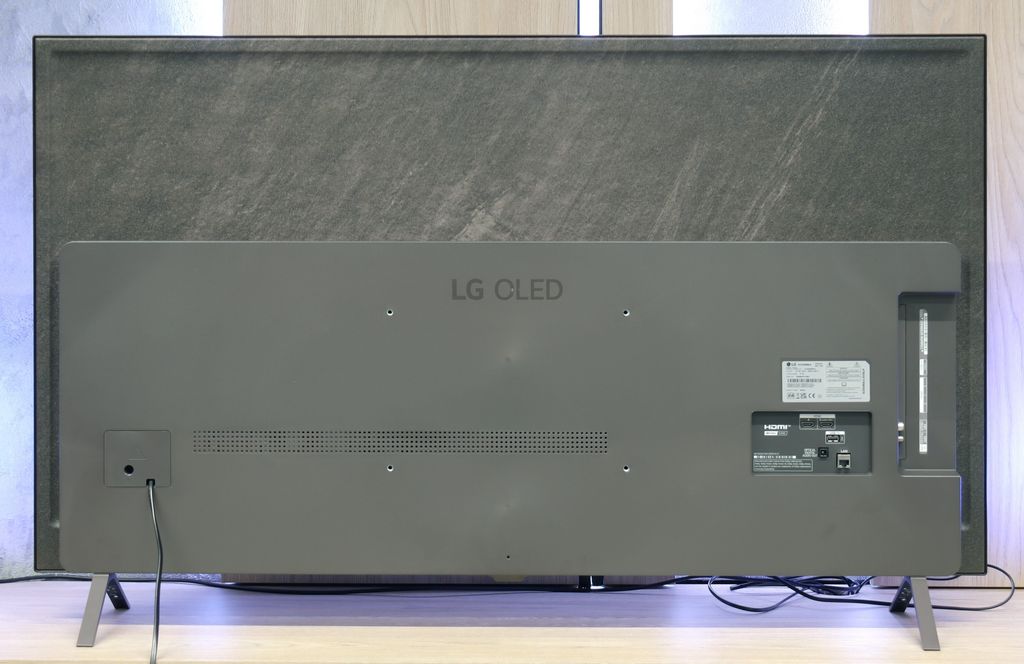
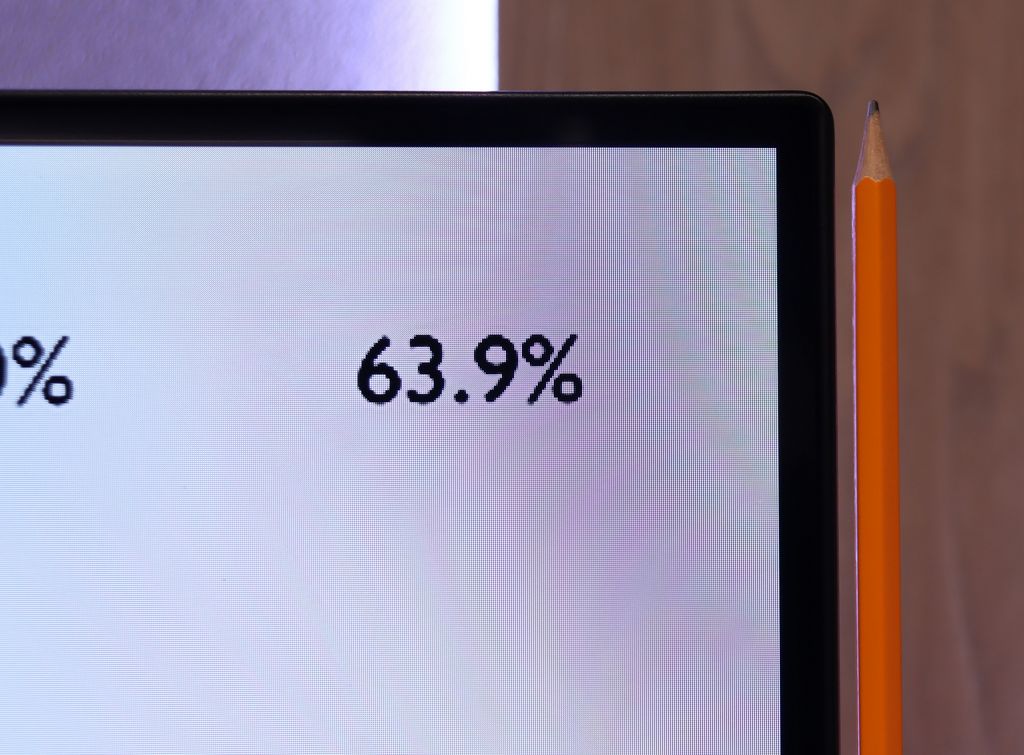
Contrast and black detail
10/10
10/10
Contrast:

Result
∞:1

Result
∞:1

Result
∞:1

Result
∞:1

Result
∞:1

Result
∞:1

Result
∞:1

Result
∞:1

Result
∞:1

Result
∞:1
Halo effect and black detail visibility:

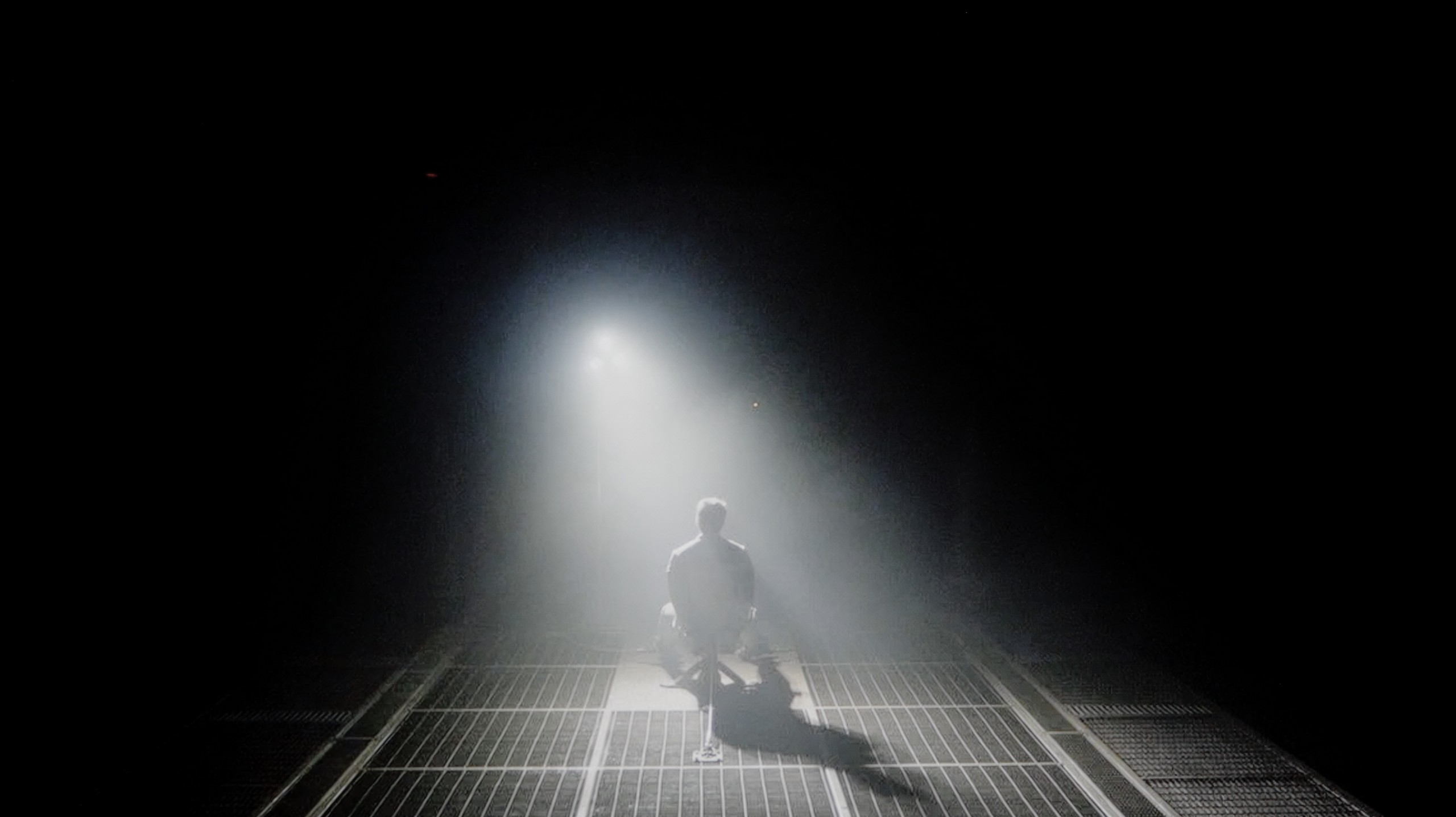
Samsung S90D, thanks to the OLED matrix used, offers infinite contrast, which is one of its greatest advantages. OLED matrices are characterised by the fact that each pixel emits its own light, allowing for deep blacks and excellent detail reproduction in dark scenes. Unlike traditional LCD matrices with backlighting, where black often takes on a grey hue due to uneven backlighting, OLED guarantees that switched-off pixels remain completely black. This allows for achieving a very high level of contrast, making the images more dynamic and realistic. In the scene from "Oblivion," the Samsung S90D brilliantly showcases the high light effect of the lantern, highlighting the intensity and details in the bright parts of the image. Conversely, in the film "Sicario 2," you can clearly see the separation of the helicopter lights from the dark background. A surprising aspect of the S90D model is that Samsung, after years of disputes, decided to use organic matrices manufactured by LG, in versions with "DAE" at the end of the name. Is that a bad thing? No! In terms of contrast, both WOLED and QD-OLED matrices offer the same, which is perfect black.
If you are looking for changes compared to last year's LG B4, we will immediately dispel any doubts – you won't find any in this category at all. And that's good. Because how to improve something that is already bordering on perfection? The LG B5, as a television with an organic WOLED panel, offers black as tar scenes and a contrast that is hard to find even in the most expensive LCD screens. The display is as clear as a bell – no bleed-through, no streaks, no halo effects that can ruin the atmosphere in cinema scenes. Here, everything is in its place. Details separate from the black with surgical precision, nothing blends together, even in the most demanding sequences from films such as The Revenant or Oblivion. This is the type of television that can enchant you, especially when the room goes completely dark. When the lights go out, the LG B5 takes centre stage – and it does so spectacularly. In these conditions, OLED shines the brightest, and even top LCD models – despite advanced dimming and hundreds of zones – simply fall behind.
HDR effect quality
6.9/10
6.2/10
Luminance measurements in HDR:

Result
960 nit

Result
990 nit

Result
1098 nit

Result
1042 nit

Result
490 nit

Result
587 nit

Result
593 nit

Result
628 nit

Result
589 nit

Result
470 nit
Scene from the movie “Pan” (about 2800 nits)


Scene from the movie “Billy Lynn” (about 1100 nits)


Static HDR10


Dynamic: HDR10+
Dynamic: Dolby Vision


HDR luminance chart:
LG OLED B5
HDR luminance
Luminance of RGB colors
Samsung OLED S90D / S94D (WRGB OLED)
HDR luminance
Luminance of RGB colors
In the tested film scenes, the television Samsung S90D achieves impressive brightness results, exceeding the 1000 nits barrier in the first four shots, which can be considered an outstanding result. In the case of the last shot, where a full-screen flash of sunlight is visible, the brightness drops to around 500 nits, but still remains at a very good level. Additionally, the television impresses with a DCI-P3 colour gamut coverage measurement of 98%, ensuring an extraordinarily rich and realistic colour reproduction, further enhancing the picture quality. This result makes the Samsung S90D an ideal choice for those expecting high-quality images in a variety of lighting conditions.
The LG B5 is a moderately bright OLED television. Regardless of the scene, it can generate around 500 nits of peak brightness. Interestingly, it achieves this even in full-screen shots saturated with white, where most OLEDs typically struggle. So is this screen suitable for HDR films? Indeed – and very much so, because such brightness allows you to truly feel the magic of HDR effects. However, it is worth noting that compared to last year's B4 model, the new B5 is darker – by about 100 nits. It may seem like a small amount, but at such average peak values, it makes quite a significant difference. Fortunately, the television compensates with another advantage – excellent coverage of the DCI-P3 and BT.2020 colour gamut. As a result, HDR films look really colourful, vibrant, and impress even in more demanding scenes.
Factory color reproduction
7/10
8.2/10


Factory Mode
After calibration


Factory Mode
After calibration
The S90D television has been tested in Filmmaker mode, which offers good colour reproduction, although with some imperfections that may be noticeable to more discerning users. This mode may seem a bit too warm, and users who switched from Standard mode may experience a slight shock. It is worth noting that this situation is caused by poor settings, such as in the white balance, rather than the Filmmaker mode itself. In both SDR and HDR content, the device exhibits drops in blue colour, making colours warmer than they should be. In practice, this means that some shades, such as sky blue or skin tones, may appear less natural and more tinged with pink or yellow. The Colour Checker test confirms these deviations, showing shifts towards warmer tones. In SDR content, the gamma graph indicates slight fluctuations, resulting in a minimally darker image, especially in shadows. This can affect less defined details in darker scenes. Conversely, in 4K HDR materials, the EOTF curve is above the recommended line, leading to overly bright displays in certain parts of the image, which can cause clipping in the brightest areas. Overall, Samsung S90D presents a solid picture right out of the box, but for the best effects, especially with more demanding content, additional calibration is recommended.
We tested the B5 in Filmmaker mode and... we would love to see more TVs like this straight out of the box. Truly. The white balance is set very well – there's practically nothing to complain about. Well, if one were to nitpick, one might notice a slight deficiency in blue, which makes the overall image seem slightly yellowish. But that’s just our editorial quibbling. Most of you probably wouldn’t even notice it. We also have minimal reservations about brightness management in HDR format. The EOTF curve – which is responsible for how the TV distributes brightness in a scene – is slightly below ideal. In practice, it may happen that the darkest parts of the image are displayed too dark and simply… disappear. But these are details that only come out in measurements. Generally: we are impressed. However, we also know that LG TVs respond very well to professional calibration. You can achieve almost reference-quality picture from them, so – while it's already very good out of the box – we allowed ourselves to go a step further and refine everything to perfection.
Color reproduction after calibration
8.7/10
9.1/10



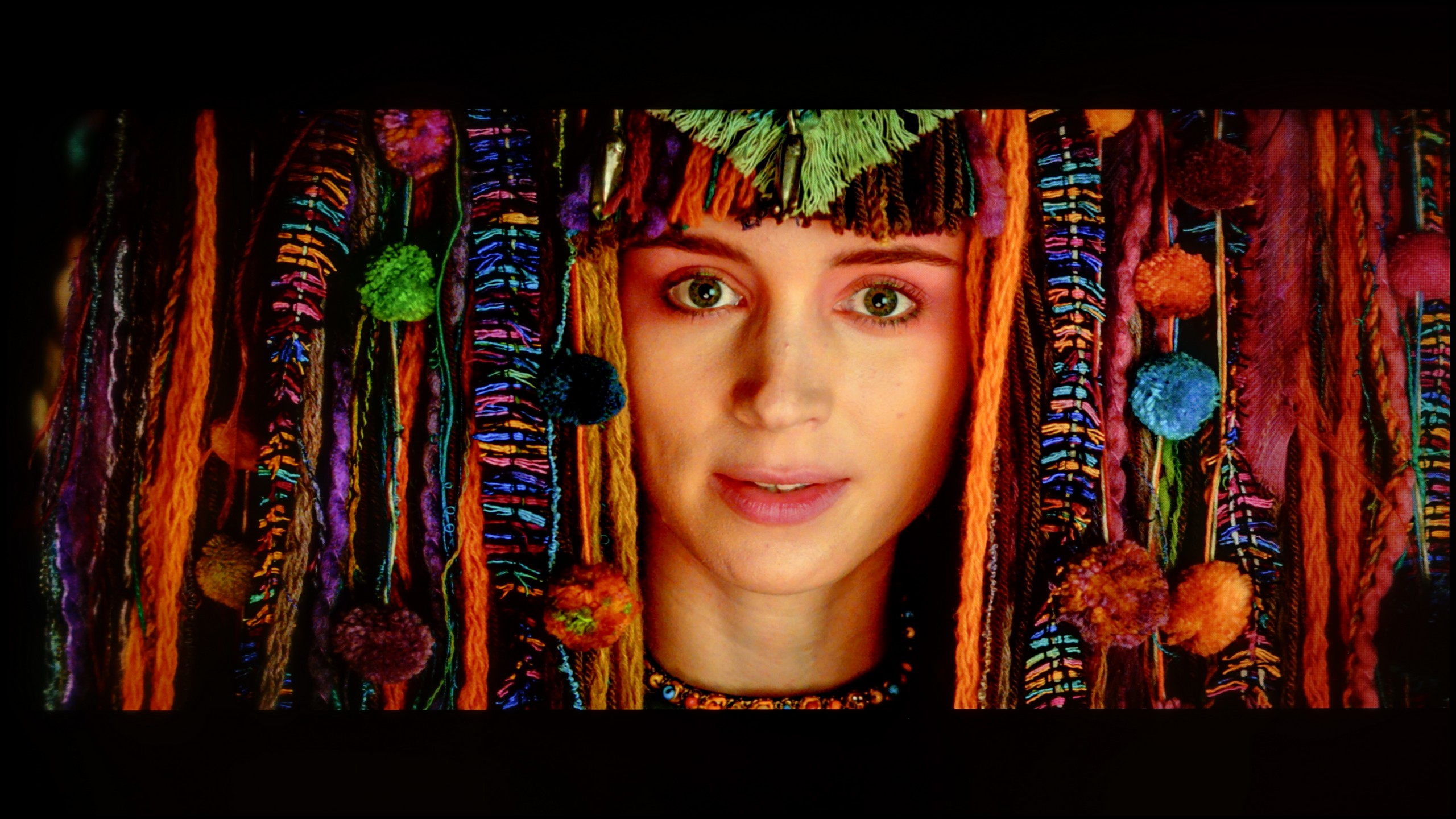
After calibration, the Samsung S90D television in movie mode looks even better than one might have expected. The white balance, for both HD and 4K HDR content, has been improved almost to perfection. Although minor flaws can still be noticed, they are minimal enough not to significantly affect the picture quality. The colours are more balanced, which translates to a natural reproduction of details, especially in scenes requiring a precise colour palette. It is worth noting that this model in this size is equipped with a WOLED panel, which has less coverage of the wide colour gamut and does not offer as rich colours as, for example, the 65-inch version, which is equipped with a QD-OLED panel.
Contrast has also seen significant improvement. The gamma graph post-calibration is much closer to the expected line, providing better balance between bright and dark areas of the image. The EOTF curve, which prior to calibration showed issues with overexposed scenes, now presents better results. This effect allows for greater detail retention in bright parts of the image, especially in HDR materials.
We must admit that we didn't have much work with the LG B5. It's one of those televisions that look good right from the start, but after calibration… they can really impress. The white balance was brought to almost perfect levels – to the point of errors that are invisible to the human eye, unless you are a professional colourist with a magnifying glass at the screen. We also managed to master the tendency of the television to slightly dim the darkest details, particularly in HDR scenes. After proper tuning, everything looks cohesive: black remains deep but does not consume information. Highlights maintain their natural sparkle, and colours align with the director's vision. This is truly one of those models that shows you don't have to spend a fortune to have an almost reference-quality picture. If you can opt for professional calibration – it’s definitely worth it in the case of the B5.
Smoothness of tonal transitions
7.6/10
7.2/10





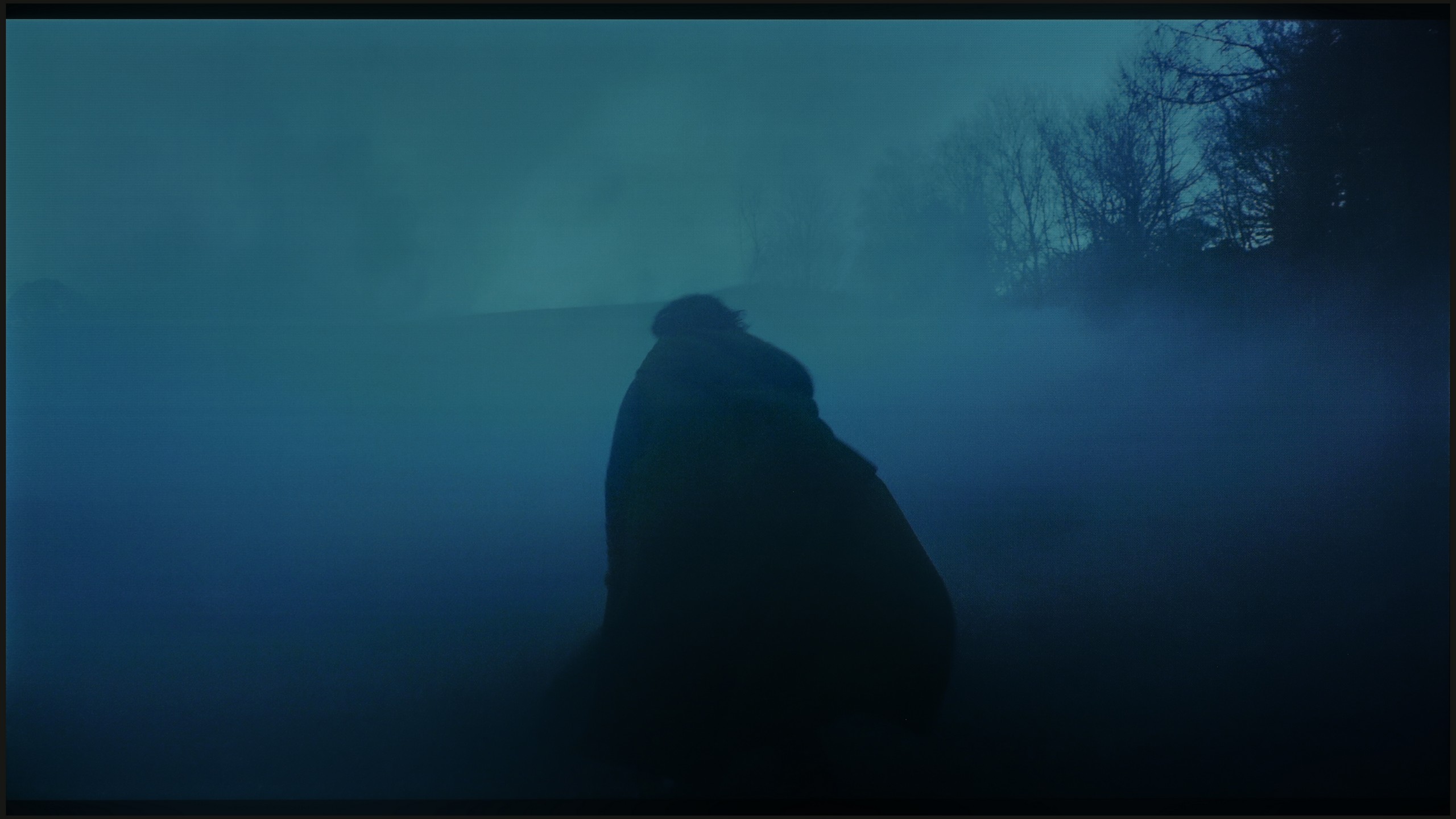






The fluidity of tonal transitions on the Samsung S90D television is at a good level, although subtle imperfections are noticeable in places. In most scenes, tonal transitions are smooth and well-reproduced, providing a natural image viewing experience. In more demanding sequences, such as dark coloured skies, slight issues can occur; however, they do not significantly affect the overall visual experience. In the test scene with dominant red hues, one can notice slight cutoffs in the brighter areas, but they are subtle enough not to hinder viewing. Overall, the fluidity of tonal transitions on the Samsung S90D television scores well, ensuring a good reception of content.
The LG B5 handles colour gradation quite decently. In bright scenes, where we have smooth transitions between skin tones, the sky, or backgrounds, the television blends colours seamlessly and without any jarring effects. At first glance – it looks good, especially considering the price. However, it is enough to reach for more challenging material – those darker, more demanding scenes with a lot of subtle transitions – and the challenges begin. Minor artefacts, false contours, and slight thickening appear. It is still not a level that dazzles or distracts from the narrative, but the difference compared to more expensive WOLED models – and even more so QD-OLED screens – becomes noticeable.
Image scaling and smoothness of tonal transitions
7.9/10
7.5/10
Smooth transition function

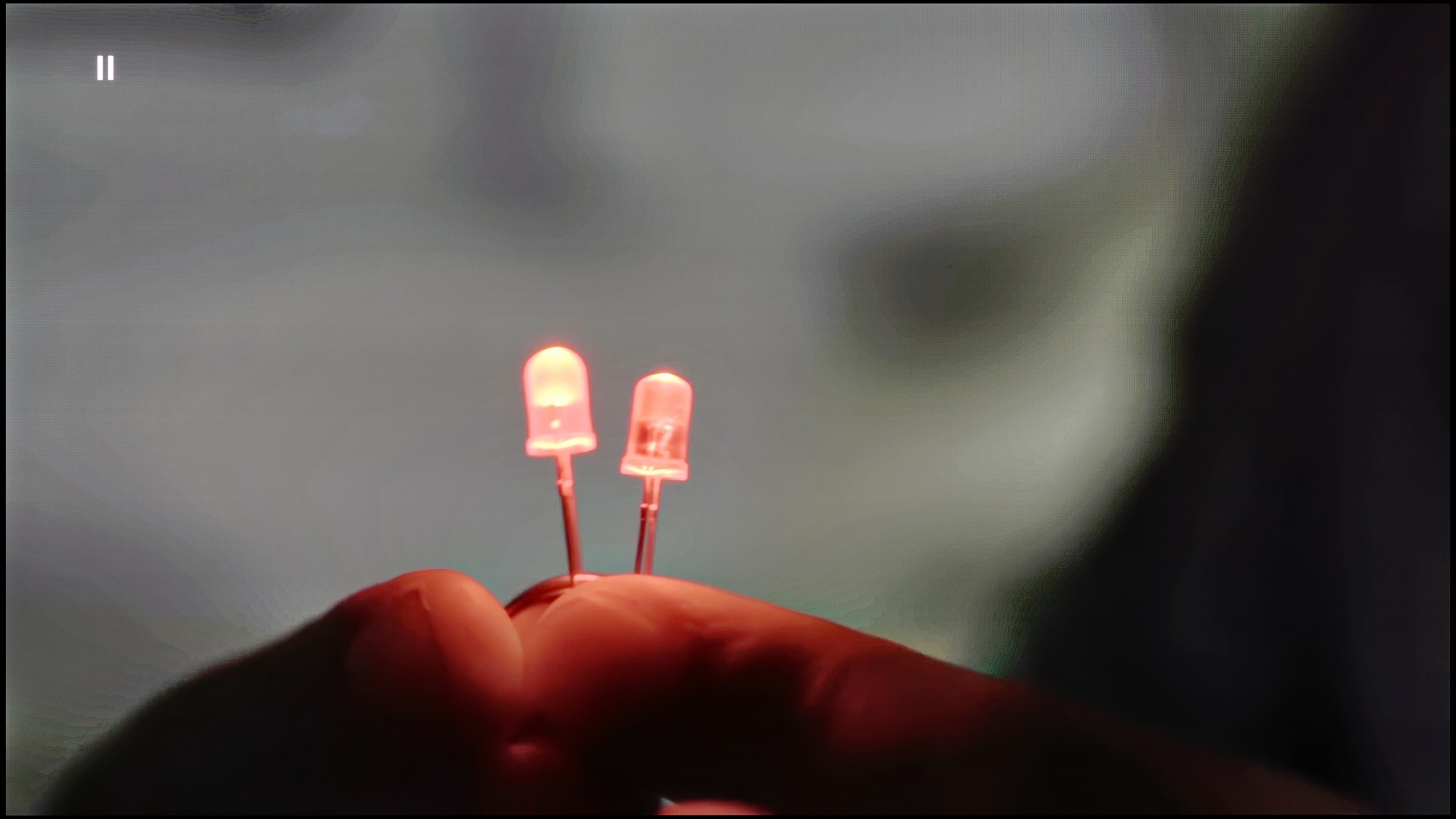
Image without overscan on the SD signal


Television S90D performs very well at smoothing tonal transitions. Thanks to the applied technology, the transitions between colours are more fluid and natural. There is also the option to use noise reduction, which further smooths tonal transitions, which can be useful in certain situations. However, it is worth remembering that enabling noise reduction can also lead to the smoothing of desirable film grain, which in turn could reduce the cinematic atmosphere of the image. For this reason, caution is advised when using this feature, as it is better to leave the natural grain that adds character and authenticity to the viewed content.
Samsung, as always, does not disappoint and excels in the area of scaling images from lower resolutions. The S90D Samsung television effectively processes lower resolutions, as can be seen in the visible image. The outline of the model is clear and accurate and, as a result, looks natural and detailed. Moreover, the branches of the trees are well-rendered, showing no significant jaggedness, which could diminish the image quality. Thanks to effective scaling, even materials in lower resolution present attractively on the screen, pleasing users who prefer various sources of content such as regular antenna/cable television.
LG B5 really positively surprised us in terms of handling lower quality content. Thanks to the enhancement and smoothing features, materials in HD resolution or even SD gain a second life. Importantly – when this option is activated at the "low" or "medium" level, we do not feel that the image is artificially softened or smoothed out unnecessarily. Details remain intact, film grain does not disappear, and the edges of objects do not look washed out 😉. This is truly a useful tool – especially if you are watching terrestrial television, archival materials, or content from YouTube in lower resolutions. The image is clear, coherent, and simply pleasant to the eye.
Scaling as such works very well – even content of poor quality is reproduced with surprising fidelity. Unfortunately, there was a slight hiccup. Although the menu contains the option to disable overscan, the television still has issues with correctly displaying images of very low resolution. It may seem like a detail, but when watching older materials – it can be irritating.
Blur and motion smoothness
8.5/10
8.5/10

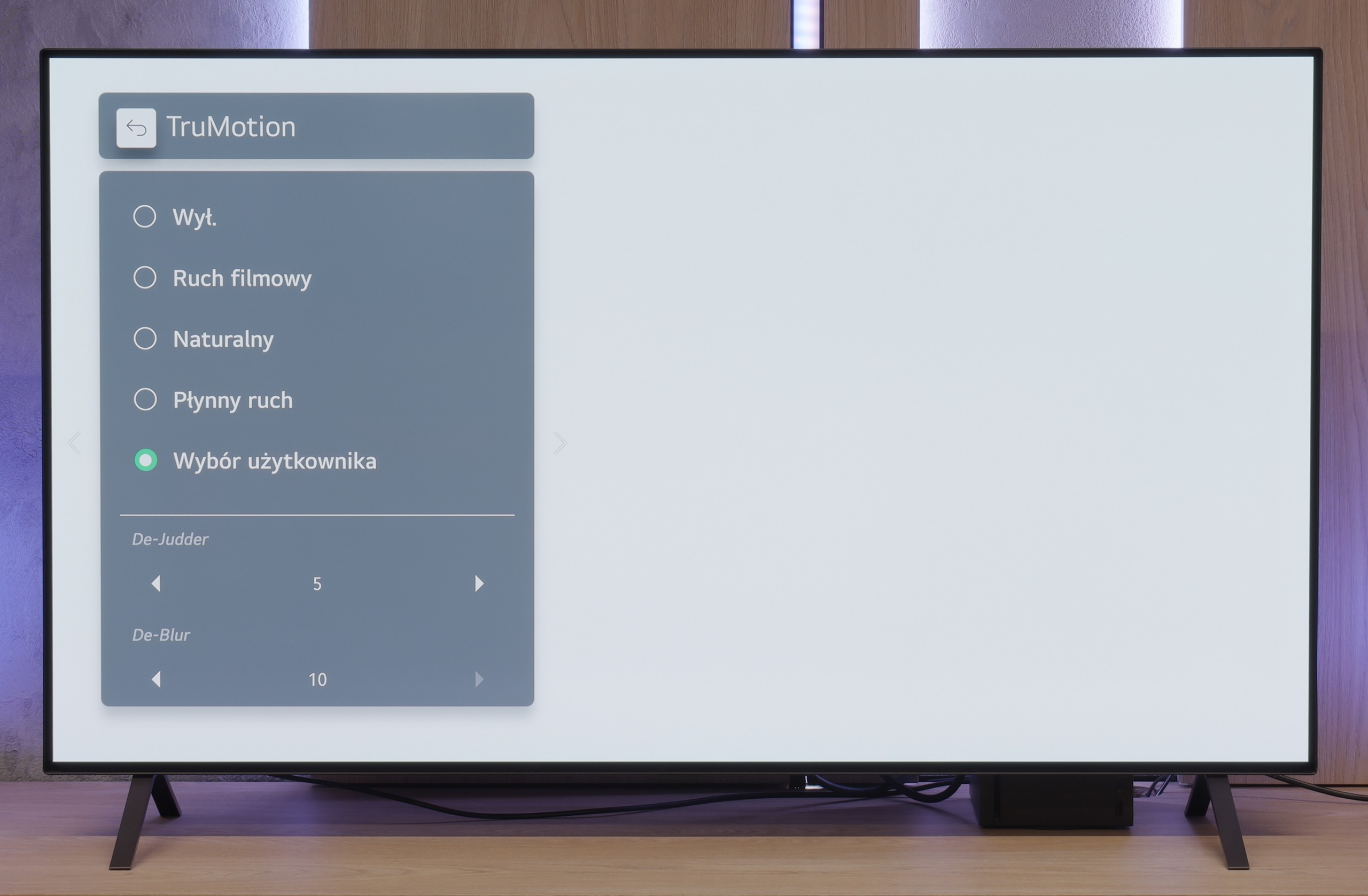
Blur (native resolution, maximum refresh rate):






Samsung S90D TV is equipped with a 120 Hz panel, with the possibility of "overclocking" to 144 Hz with the appropriate PC configuration, providing exceptional motion fluidity. Samsung has been offering a variety of sharpness settings on a ten-point scale for years, allowing users to adjust the display to their preferences. In the UFO test, thanks to the use of an OLED panel, there's no sign of any smearing. The pixel response is instantaneous and perfectly captures dynamic movements. In this aspect, OLED technology is considered one of the best on the market. The picture is extremely sharp and detailed, even during fast actions, making the S90D TV an ideal choice for gamers and sports enthusiasts.
LG B5 is a television with a 120 Hz OLED panel. It may not sound as impressive as the marketing claims of “144 Hz” or “165 Hz” found in gaming monitors, but honestly? The smoothness is excellent nonetheless. The picture is sharp, fluid and simply enjoyable to watch – even when there is a lot happening on screen. The organic panel does its job – the pixel response time is almost instantaneous, meaning there’s no sign of smearing or blurring that can spoil dynamic shots. Sport, fast-paced games – everything looks clear and distinct.
We also have the classic LG smoothness enhancer, TruMotion. This allows you to smooth out films shot at 24 frames per second – which, to put it bluntly, is most of what you watch on Netflix or from Blu-ray discs. If you set lower values on the “De-Judder” slider, you’ll get a picture closer to a cinematic look – with a slight judder, but without any artificiality. Higher settings? A soap opera effect is guaranteed. Fortunately, LG gives you the option to tune everything to your liking.
Console compatibility and gaming features
9.5/10
10/10
- ALLM
- VRR
- VRR range48 - 144Hz40 - 120Hz
- Dolby Vision Game Mode
- Correct implementation of HGIG
- 1080p@120Hz
- 1440p@120Hz
- 4K@120Hz
- Game bar

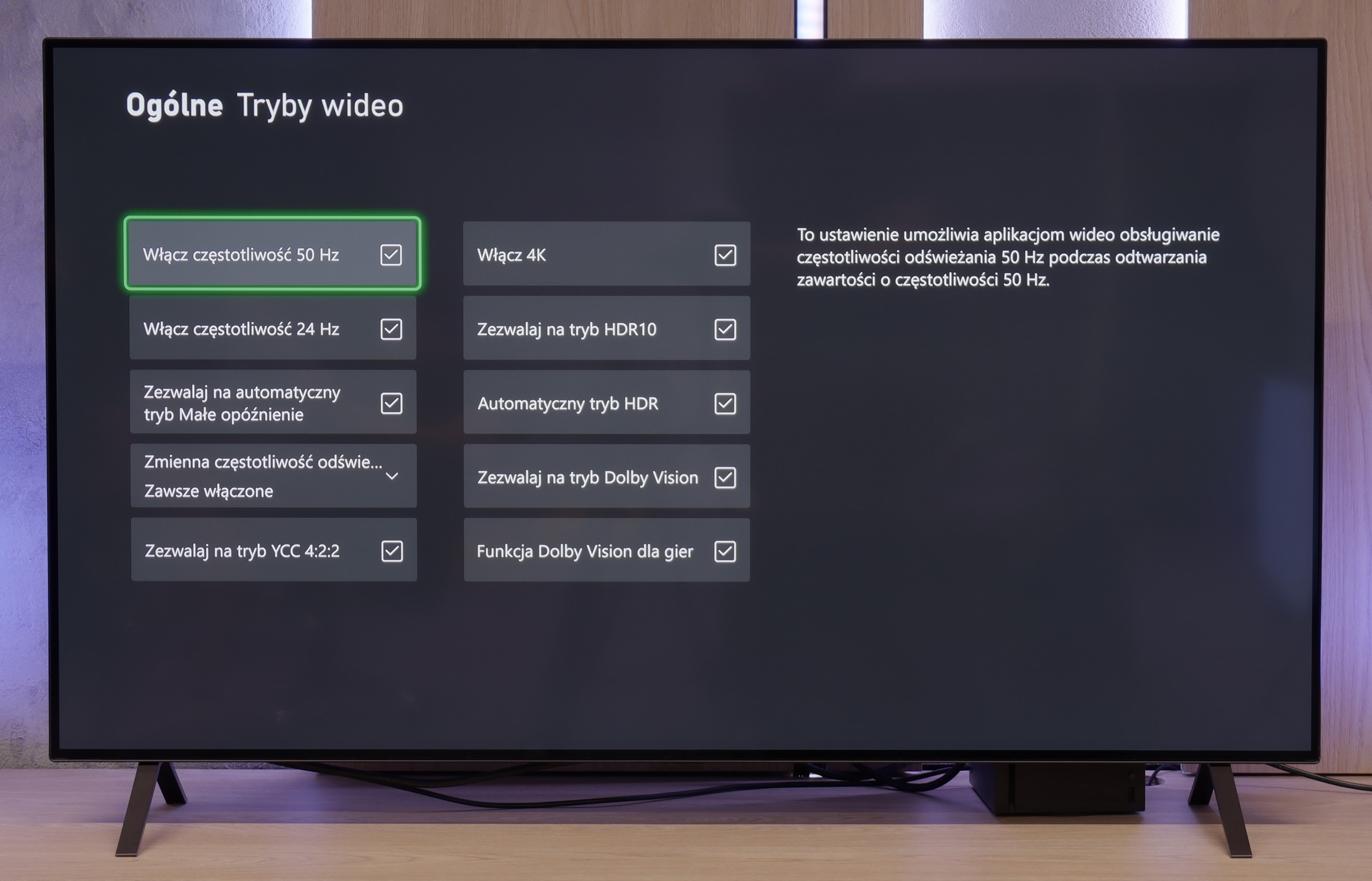

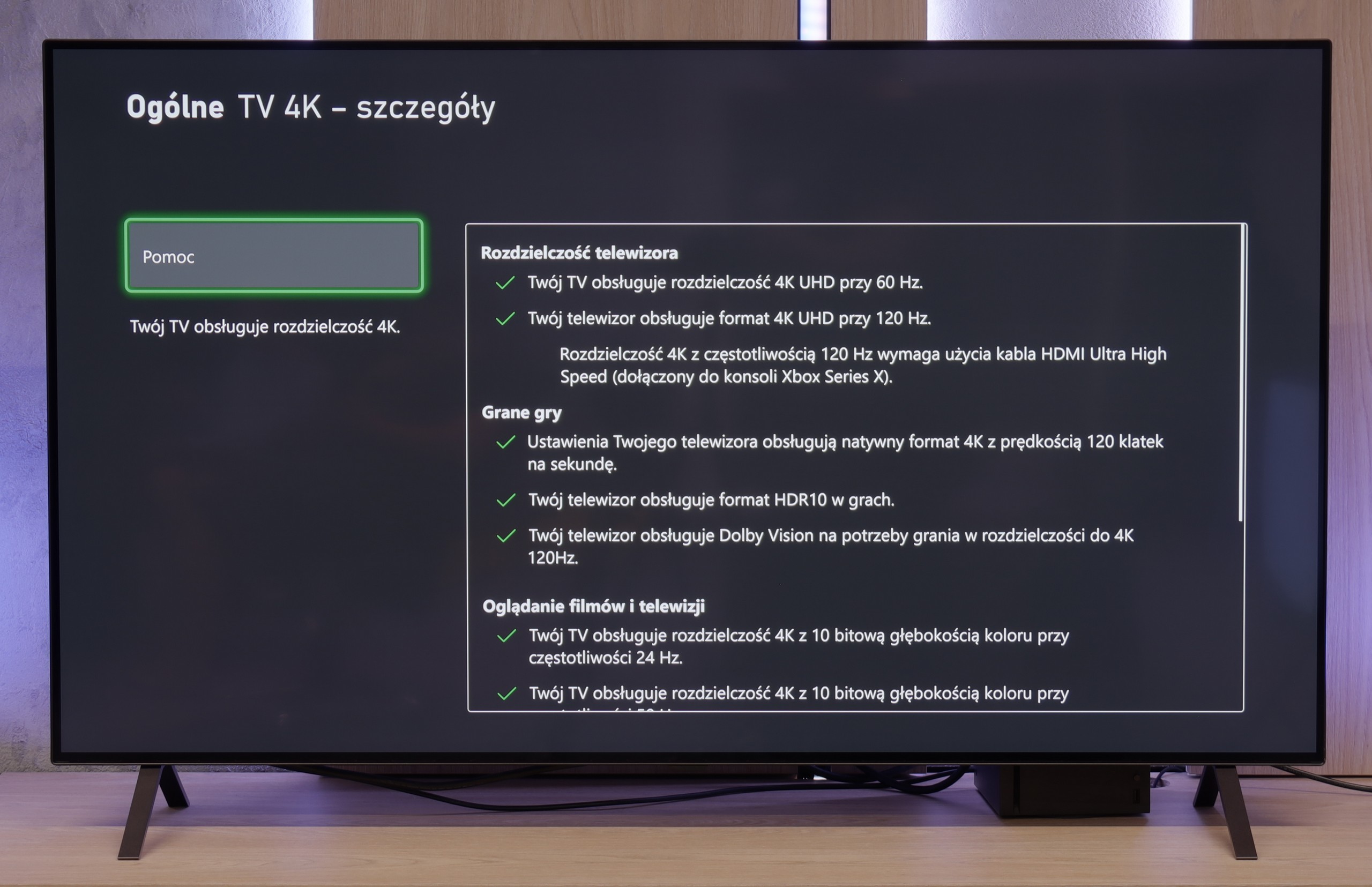

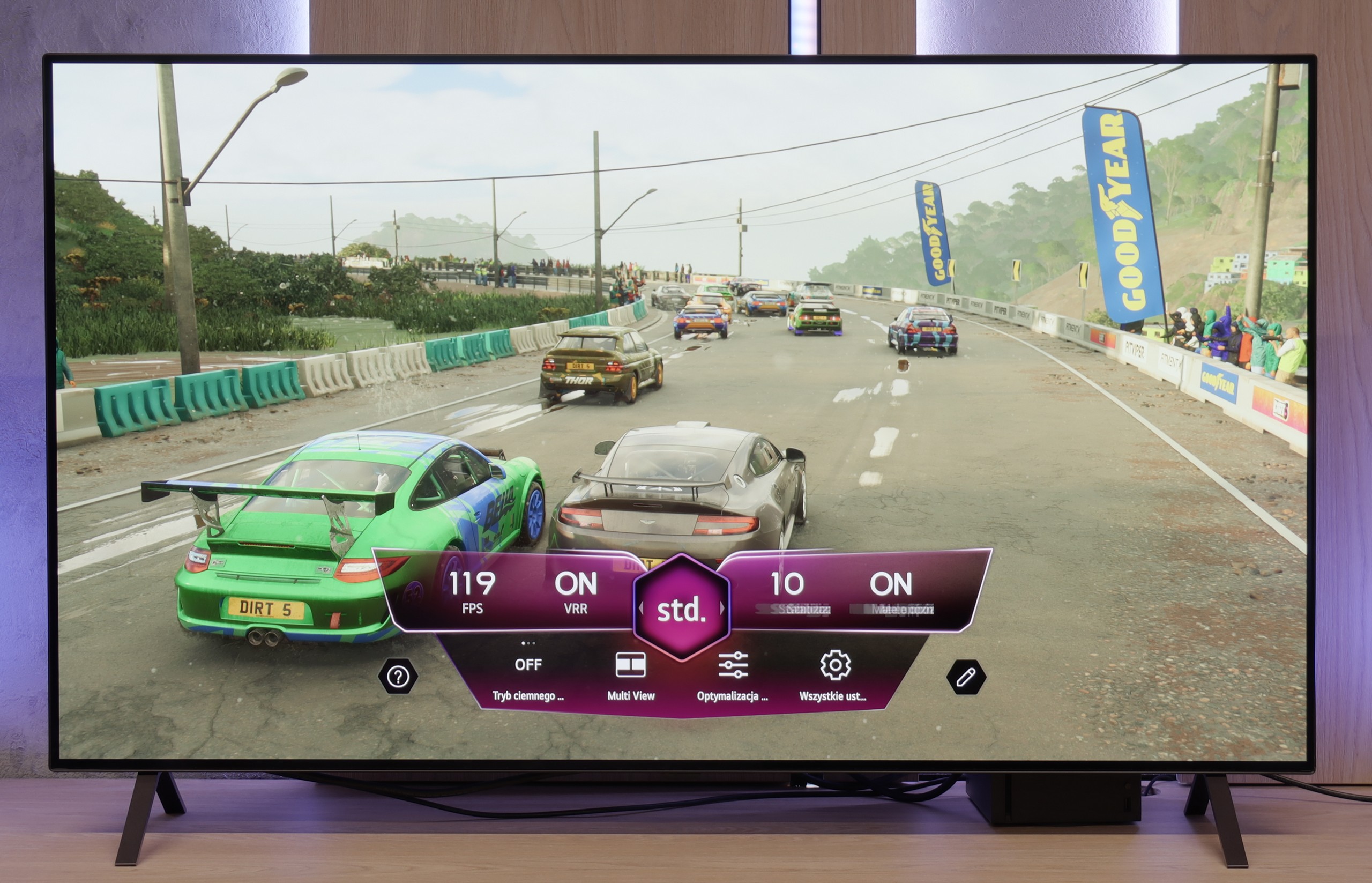

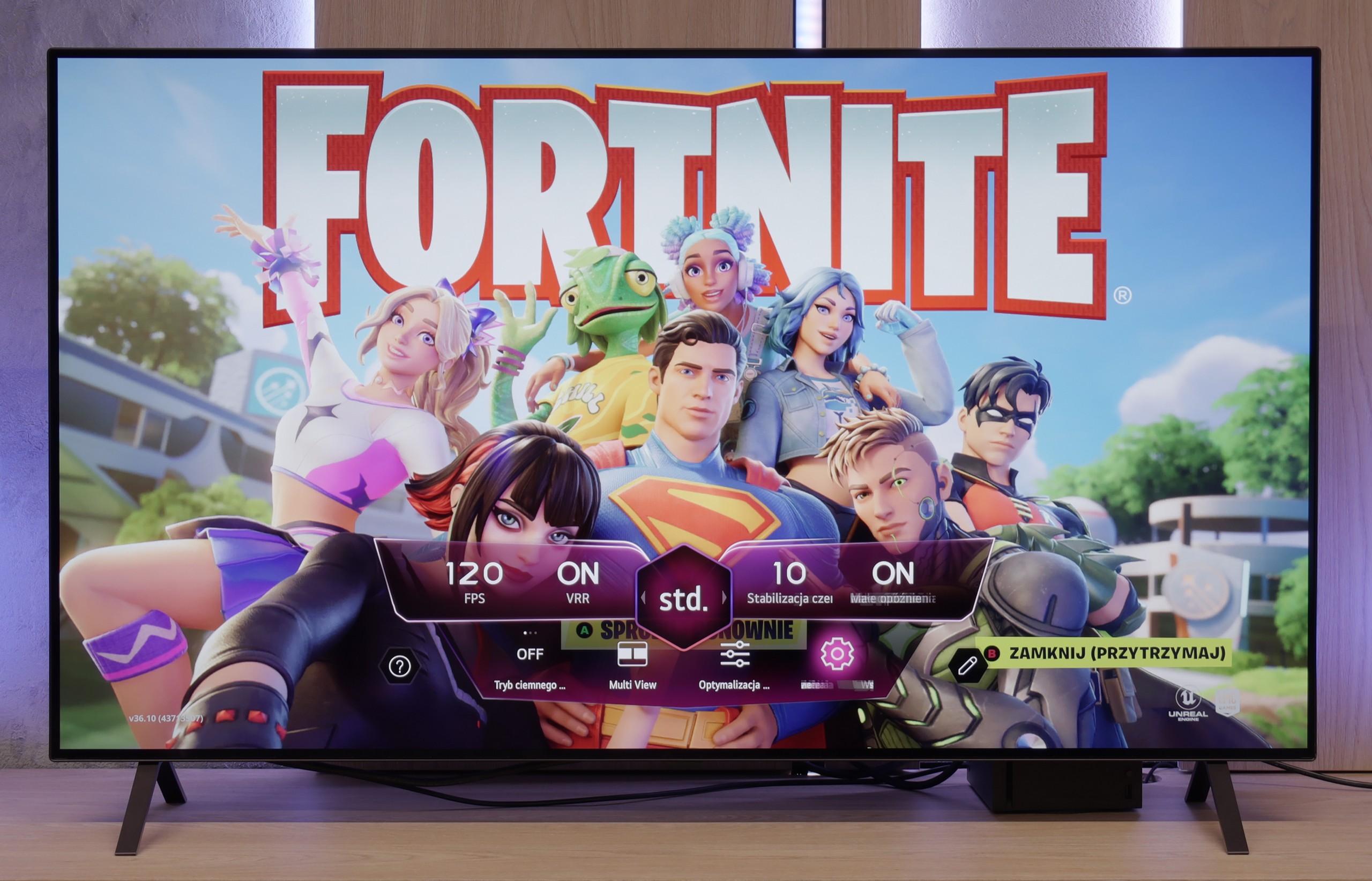
The Samsung S90D TV is perfectly adapted to the needs of gamers, offering four HDMI 2.1 ports that support key features such as Auto Low Latency Mode (ALLM), Variable Refresh Rate (VRR), and HDR Gaming Interest Group (HGIG). With these technologies, gamers can enjoy smoother and more responsive gameplay, significantly affecting comfort and performance during intense gaming sessions. An additional advantage of the television is the special Game Bar, which allows for easy management of game settings. This functionality enables quick adjustments to parameters such as changing the TV's screen aspect ratio, which can be useful in various games and types of gameplay. Users can easily customise their preferences, making the use of the TV during gaming even more convenient and enjoyable. As for PC users, the TV pleasantly surprises. When connected to a computer, the panel is capable of achieving a refresh rate of 144Hz, and users of Nvidia or AMD graphics cards can enjoy features such as G-Sync and FreeSync. It should be noted, however, that the TV does not support Dolby Vision, which may be a drawback - but it's worth bearing in mind that Dolby Vision is not as popular for games as it is for films. Nevertheless, the S90D TV still offers excellent features for gamers, making it a great choice for gaming enthusiasts who seek top-notch picture quality and modern technological solutions.
There are already a few televisions on the market with the label “for gamers” that, in practice, don’t understand what that means. The LG B5 is not one of them. Everything here is spot on – there are four HDMI 2.1 ports, it has 120 Hz, VRR, and ALLM, and it even has a Game Bar that is actually useful, not just looks good in the brochure. You connect your console – it works. You set 4K at 120 Hz – it works. You have an Xbox and want to play in Dolby Vision – it works too. And this is not in the sense of “theoretically supports”; it really turns on, looks good, and you don’t need to fiddle with the settings for half an hour. Additionally, there’s the HGiG picture mode that LG implemented correctly – which means HDR in games doesn’t turn the screen into a flash lamp, but shows exactly what it should. There are no surprises here, no strange limitations, no “buts.” And you know what? That’s how it should be. Cheers to the LG B5!
Input lag
10/10
9.9/10
SDR
HDR
Dolby Vision
The Samsung S90D OLED features an exceptionally low input lag, regardless of resolution and frame rate, both in SDR and HDR modes. Results around 10 ms are truly impressive and significantly enhance the gaming experience. Such a low input lag ensures instant reactions to on-screen actions, which is crucial in fast-paced games where every millisecond counts. This allows users to enjoy fluidity and precision, making the Samsung S90D a superb choice for those prioritising gaming performance.
Here we won't elaborate – the LG B5 simply has excellent input lag. For 60 Hz content, it achieves results below 10 ms, and for 120 Hz it even drops to around 5 ms. These are values that cannot be fairly critiqued. It simply works instantly, with no delays, no surprises. Well… almost. Because as usual, there is a small asterisk with the Dolby Vision Gaming mode. In this mode, the response time slightly increases. It’s nothing dramatic – they are still very low values, hardly noticeable during gameplay – but if you play exclusively competitive titles and fight for every millisecond on the XBOX, it’s worth keeping in mind.
Compatibility with PC
8.6/10
7.6/10

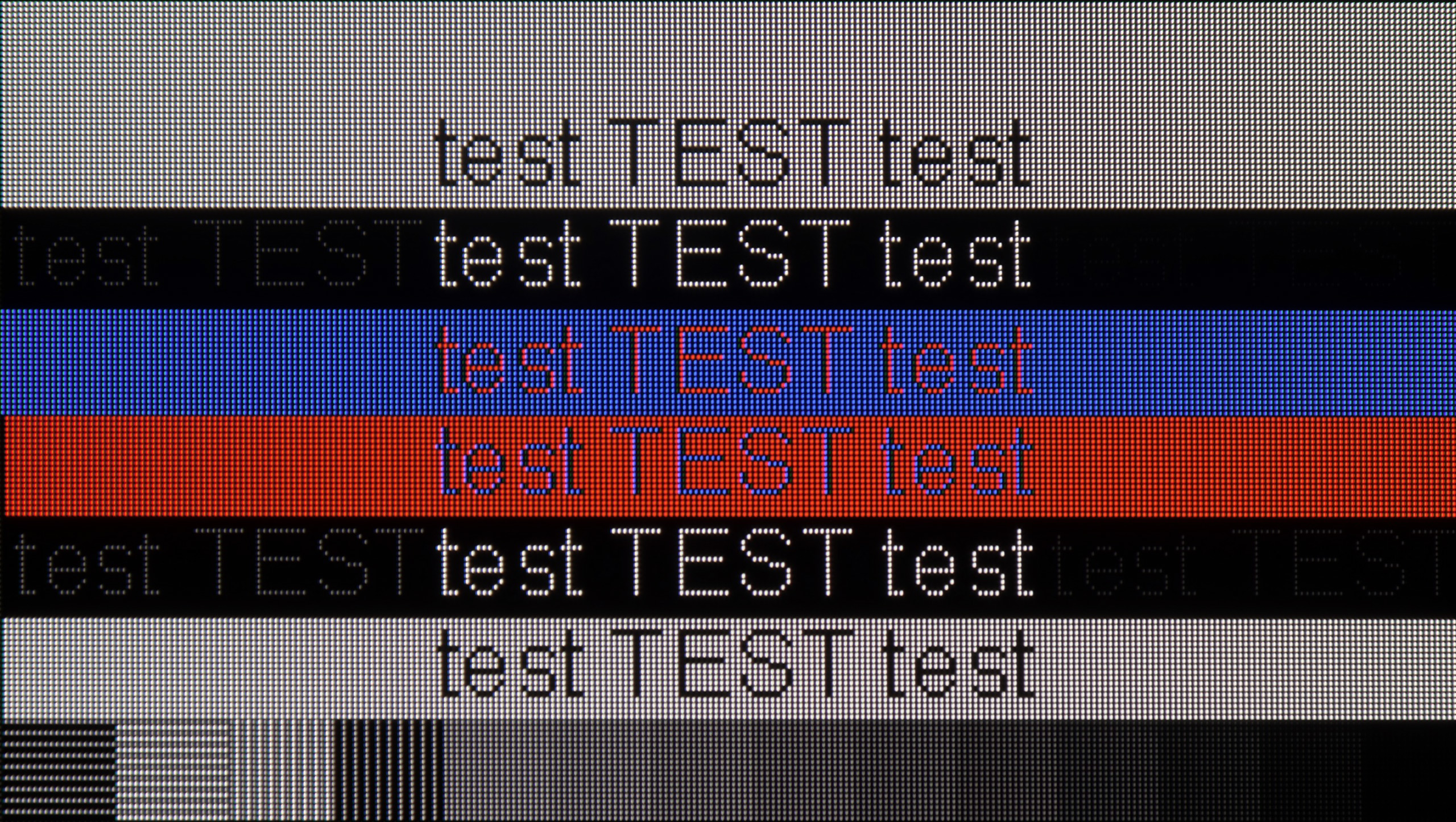
The Samsung S90D television works perfectly with a PC. The fonts are clearly visible, making it easier to read text and use applications. Additionally, it supports chroma 4:4:4 at 4K resolution and a refresh rate of 144 Hz, which ensures full colour reproduction and sharp image quality. It is worth mentioning that the input lag of only 5 ms is extremely advantageous, particularly for gamers and professionals working with graphics. With such low latency, using the television as a monitor becomes a pleasure, allowing for comfortable and responsive work. The Samsung S90D television is an excellent choice for users seeking performance and quality in everyday computer use.
LG B5 is a television that communicates well with a computer. You won't find gaming frills like 144 or 165 Hz here, but is that really necessary for anyone? Thanks to the 120 Hz panel, low input lag, and G-Sync support, it's truly a very good screen for gaming on PC. No stuttering, no tearing, with lightning-fast response.
But it's not just for gaming. You can also quite comfortably... simply work on the B5. The television properly supports chroma 4:4:4, so fonts are readable, interfaces are clear, and your eyes won't hurt from blurred letters. This isn't a given, even among more expensive models. However, there is one 'but' – and this applies not only to the B5, but to any OLED with a WOLED panel. The RWGB subpixel arrangement can cause a slight shadow along the edges of fonts. This isn't something that stands out from the sofa. It's something that someone sitting with their nose to the screen and spending half the day in Excel would notice.
Viewing angles
7.6/10
7.4/10
The viewing angles on the Samsung S90D television, thanks to OLED technology, are unparalleled. OLED offers excellent colour and contrast reproduction, even at wide viewing angles, ensuring that the image remains sharp and vibrant from almost any perspective. Users can enjoy a consistent visual experience, regardless of where they are watching the screen from. The only televisions that might perform better in this regard are models equipped with MLA (Micro Lens Array) or QD-OLED technology. These innovative solutions further enhance image quality from various angles, but under standard conditions, OLED remains the leader in terms of viewing angles, providing users with exceptional visual experiences.
In terms of viewing angles, the LG B5 performs very well – exactly as one would expect from an WOLED panel. No matter from which side you sit, the picture maintains its quality. The colours do not wash out, the contrast does not deteriorate, and the details remain clearly visible. However, it must be said that this is not the level of Samsung Display's QD-OLEDs. Those can hold colour saturation even better at extreme angles. But if you do not plan on watching films while sitting at a 90-degree angle – the B5 is more than sufficient. It is one of those televisions that is simply pleasant to look at – from every angle.
TV efficiency during daytime
6/10
4.9/10

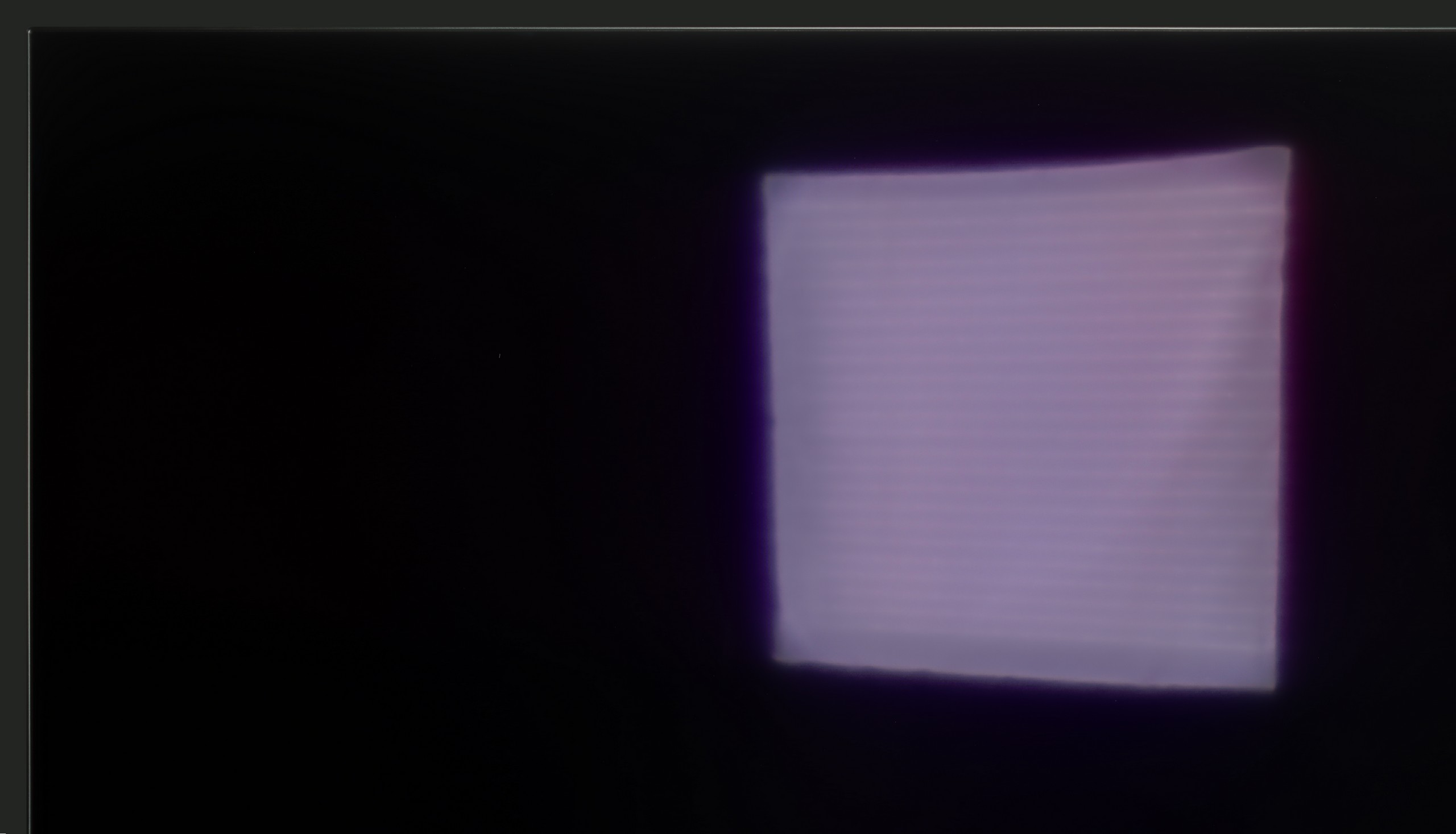

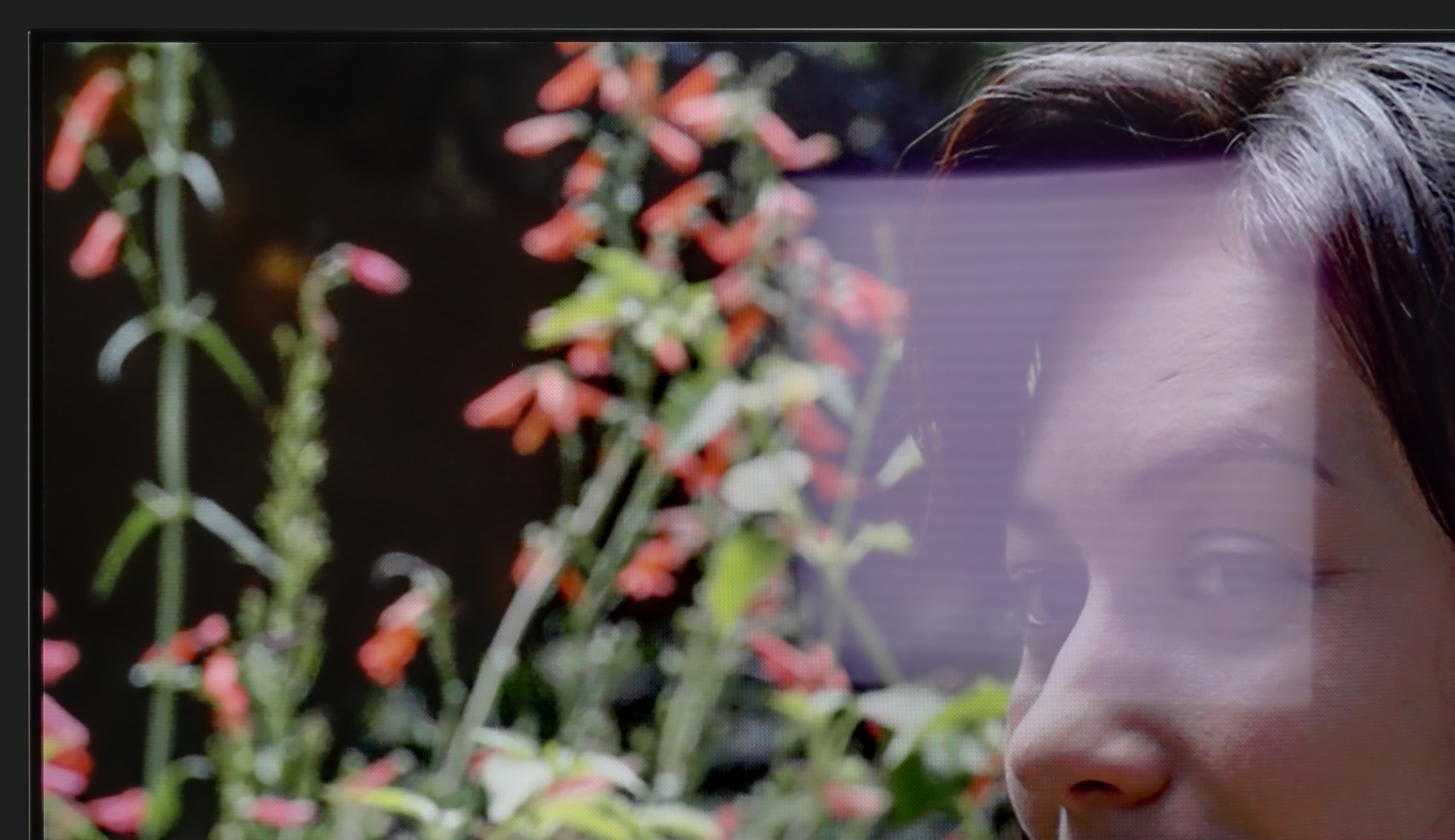
Matrix brightness
Average luminance SDR
LG OLED B5: 279 cd/m2
Samsung OLED S90D / S94D (WRGB OLED): 396 cd/m2
When watching during the day, the Samsung S90D performs very well, achieving an average brightness level of around 400 nits, which is a very good result for OLED technology. Despite the glossy display, the suppression of reflections is at a decent level, allowing for comfortable viewing even in bright rooms. The only noticeable drawback of this technology, rather than the television itself, is the brightness at 100% white screen fill. In such conditions, OLED may struggle to achieve extremely high brightness. Situations like this can be seen when we want to watch winter sports, such as ski jumping.
LG B5 is a television that feels best after dark. But when the sun comes out, it becomes a challenge. The brightness of this model is rather average, and the anti-reflective layer... also average. There are no special coatings here that handle reflections or very bright daylight well. So if you plan to place this television opposite a large, uncovered window – it could simply be difficult to see anything.
Fortunately, there is something worth praising: the glossy WOLED panel maintains colour saturation well. Even in difficult conditions, the image does not fade and does not become "washed out," as can happen with some models of televisions. Generally, it is watchable, but if you are looking for a television specifically "for a bright living room," then the B5 should not be your first choice.
Details about the matrix
Subpixel Structure:

Panel uniformity and thermal imaging:


TV features
7.4/10
7.9/10
- HDMI inputs0 x HDMI 2.0, 4 x HDMI 2.1 48Gbps0 x HDMI 2.0, 4 x HDMI 2.1 48Gbps
- OutputsToslink (Optical audio), eARC (HDMI), ARC (HDMI)Toslink (Optical audio), eARC (HDMI), ARC (HDMI)
- Network InterfacesWi-Fi 2.4GHz, Wi-Fi 5GHz, Ethernet (LAN) 100MbpsWi-Fi 2.4GHz, Wi-Fi 5GHz, Ethernet (LAN) 100Mbps
- TV receptionDVB-T, DVB-T2, DVB-S, DVB-S2, DVB-CDVB-T, DVB-T2, DVB-S, DVB-S2, DVB-C
Classic features:
- Recording to USB (terrestrial TV)
- Recording programming
- Picture in Picture (PiP)
- RF remote control (no need to aim at the screen)
- Backlit remote control
- Teletext
- Audio only mode
- Bluetooth headphones support
- Simultaneous Bluetooth headphones & TV audio
Smart features:
- AirPlay
- Screen mirroring (Windows Miracast)
- Voice search
- Voice search in native language
- Ability to connect a keyboard and mouse


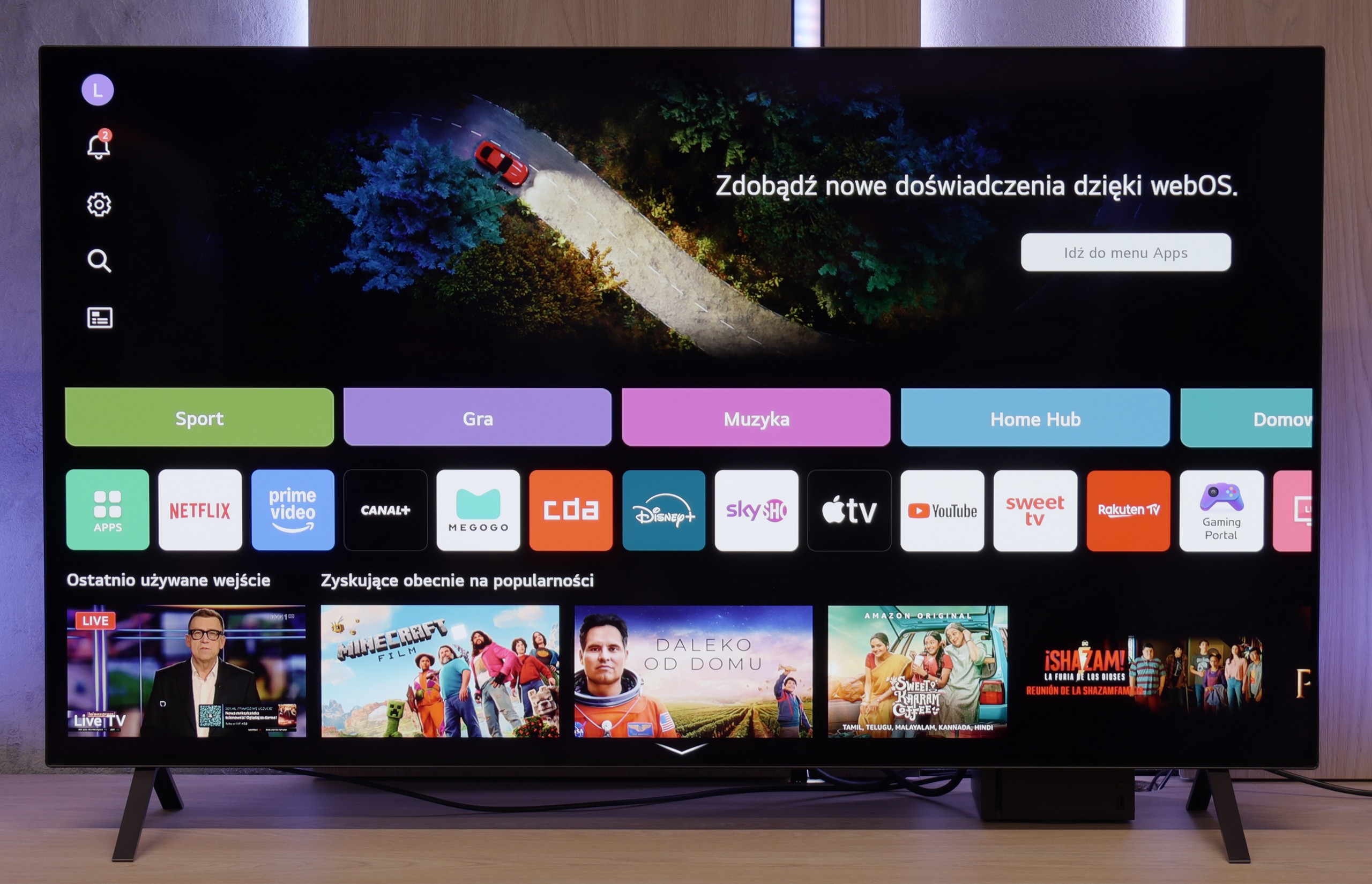
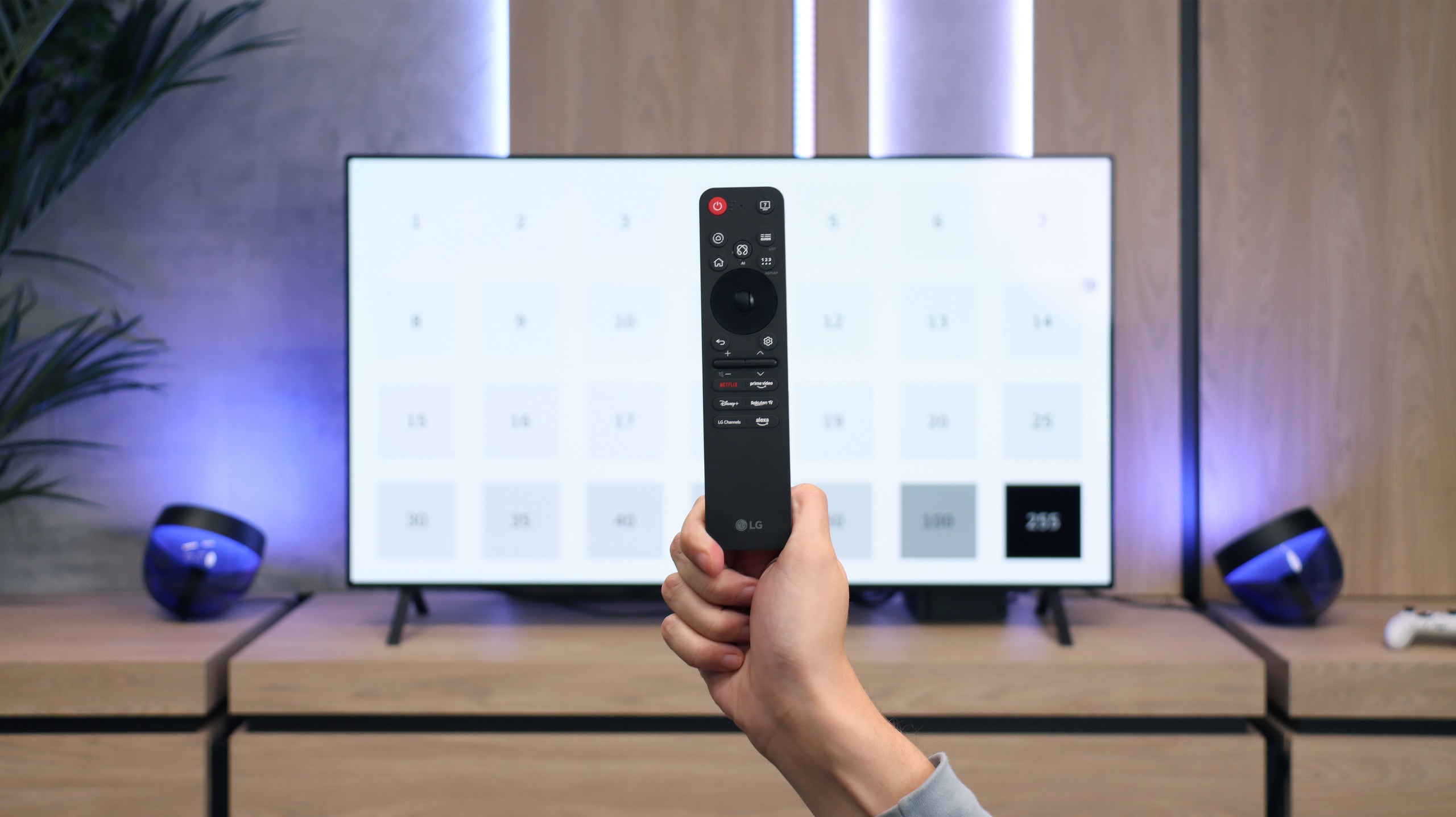
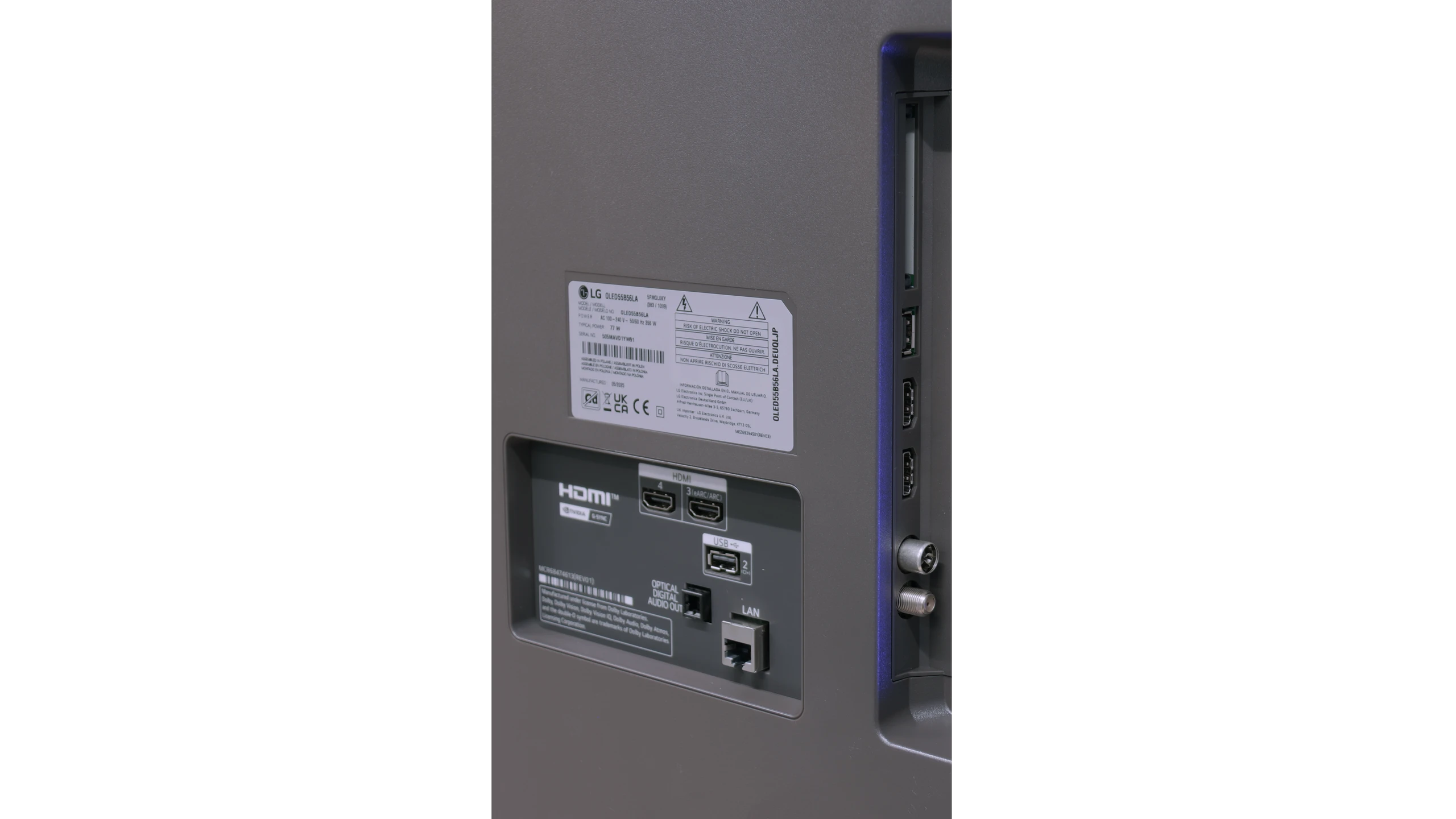
The Samsung S90 television offers a range of features that significantly enhance user comfort and make it an ideal device for home entertainment. The Tizen system, upon which this model is based, is a modern and advanced platform that provides users with an intuitive and smooth experience. Thanks to the user-friendly interface, navigating through applications and settings is quick and intuitive, making it easier for even those less familiar with technology to use the television. Tizen supports a rich set of applications, including all popular streaming services such as Netflix, YouTube, and Amazon Prime Video. A novelty for 2024 is also the availability of voice search in Polish. It's worth noting the eco-friendly solar remote, which is not only environmentally friendly but also practical for everyday use. For example, the remote can control multiple devices connected to the television, which means we don't have to use multiple remotes. Additionally, the television supports AirPlay, allowing easy content sharing from Apple devices such as iPhone or iPad. The S90D Samsung also allows for the connection of various Bluetooth devices, such as mice, keyboards, or headphones, which increases its versatility and enables the personalization of user experiences. Users can easily adjust their settings to make the most of the television's capabilities. The only downside that can be pointed out is the lack of USB recording support. For some users, this may be a limitation, especially when wanting to archive favourite programmes or films. Despite this, the Samsung S90D offers many advanced features and technologies that make it an excellent choice for anyone looking for high-quality entertainment in their home.
User features
Although the LG B5 is modern equipment, it hasn't forgotten about those who sometimes just want to... watch television. Without apps, without accounts, without logging in anywhere. It comes with built-in DVB-T2 tuners and the ability to record onto USB, along with a clear and fast EPG guide. Is that not enough? There’s even a working teletext – for many, probably a relic, for others, a daily necessity. We also appreciate the option to turn off the picture and leave just the sound, which is great for listening to music. And if you want to watch quietly – you can easily pair Bluetooth headphones, without a struggle with settings and without delays. Everything works as it should.
SMART TV: webOS
The biggest distinguishing feature of the webOS system – still! – is the way it is controlled. The Magic remote that comes with the LG B5 (in our version B56 – without a numeric keypad) works like a magic wand. You point, click, select. And it simply… works. Intuitively, quickly, and without unnecessary side-to-side clicking. Additionally, there’s an AI voice assistant – quite efficient. You can summon it directly from the remote and use your voice to search for content, change settings, or switch sources. WebOS may not be the most "modern" system on the market, and the built-in ads can be annoying, but when it comes to user convenience – especially with the Magic remote – it still outpaces the competition by a step.
Playing files from USB
9.1/10
8.6/10
Supported photo formats:
Maximum photo resolution:

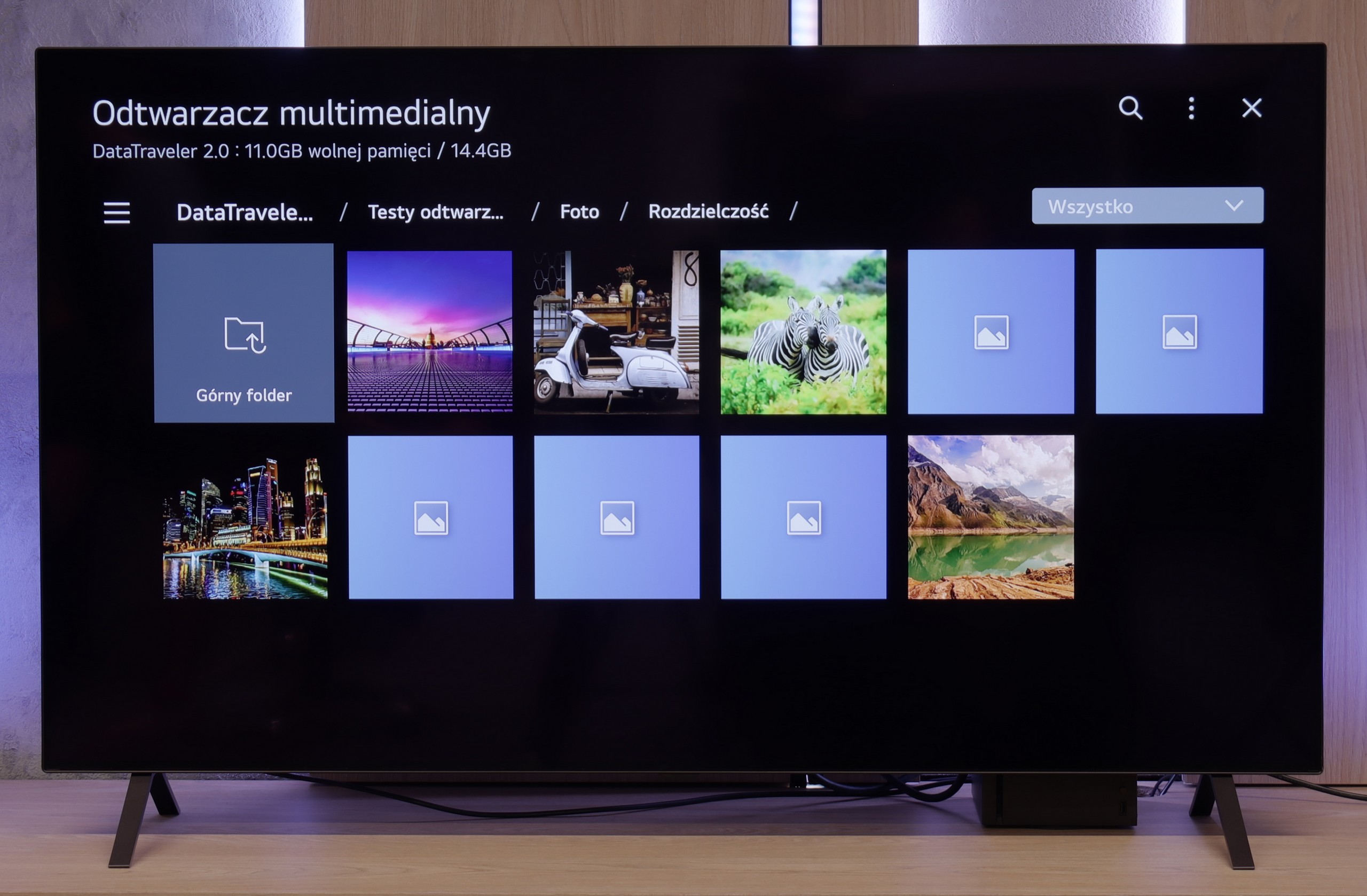
Samsung S90D is equipped with a built-in player that supports most popular video formats, allowing for convenient playback of films from various sources. The player also supports subtitles in Polish and enables users to customise the font colour, increasing comfort while watching content with subtitles. In terms of photo formats, the television handles many of them well, however, one of the few drawbacks is the inability to play the popular PNG format. Nevertheless, the overall file playback capabilities of the S90D are outstanding.
LG B5 handles files from USB as it should. Most popular formats work flawlessly, and subtitles – even with Polish characters – are displayed correctly. You can easily play a movie from a USB stick or have a weekend slideshow of your holiday photos without worrying that something will go wrong. However, there was a surprise with HEIC format files – that is, photos saved by Apple devices. While the LG C5 had no issues with them, the B5 stubbornly refused to cooperate and was unable to display them. A minor hiccup that probably won't affect everyone, but it's worth knowing about.
Apps
8.7/10
9.1/10














































Sound
7.4/10
7/10
- Maximum volume--
- Dolby Digital Plus 7.1
- Dolby True HD 7.1
- Dolby Atmos in Dolby Digital Plus (JOC)
- Dolby Atmos in Dolby True HD
- DTS:X in DTS-HD MA
- DTS-HD Master Audio
The Samsung S90D television is equipped with a 2.1 audio system with a total power of 40 W, providing clear and dynamic sound. Thanks to the subwoofer located at the bottom of the casing, the bass is deep and palpable, while the mid and high tones remain well balanced. It is worth noting that the twin model S94D offers an even more advanced 2.1.2 speaker system with a power of 60 W. If the silver colour of the S94D casing is not a hindrance, and the price difference between these models is minor, it is worth considering the version with the number "4" at the end. Although the television does not support the DTS format, it offers other audio technologies such as Dolby Atmos and Dolby Digital Plus. However, to fully enjoy spatial sound, it is worth considering connecting an external audio system.
We weren't expecting miracles – after all, the LG B5 doesn’t have an advanced audio system, and its built-in speakers look... well, like those in most flat-screen televisions. And yet – it sounded really pleasant. The dialogues are clear, the sound doesn’t boom, and during a calmer viewing, we didn’t immediately feel the need to connect a soundbar. It's a pity that this year LG decided to cut something that worked in the previous generation. We're of course talking about support for DTS formats, which we will no longer find in the B5. If you have films encoded in this format – you'll need to rely on an external player.


